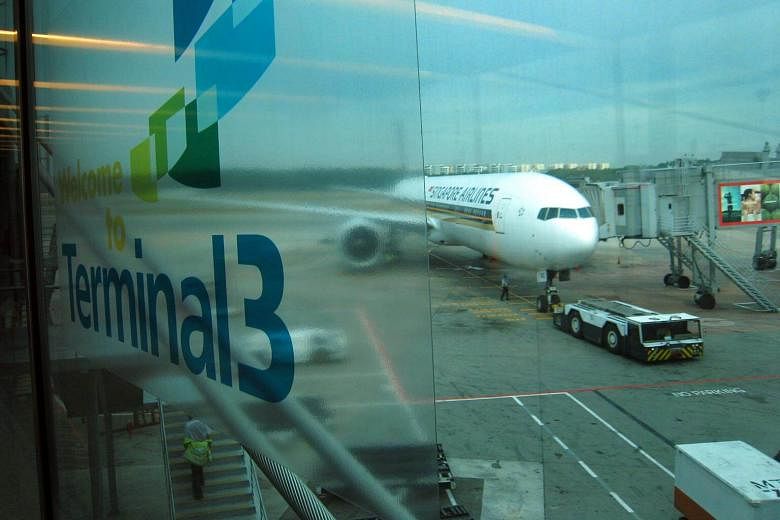SINGAPORE - From deploying roving ground staff with portable printers at Changi Airport to ease check-in queues, to adopting 3D printing for aircraft spare parts, Singapore has unveiled a masterplan to transform the aviation industry.
Also being tested is technology that could eventually allow airports to integrate two or more air traffic control tower operations for enhanced coordination and safety.
Led by the Civil Aviation Authority of Singapore (CAAS), with support from Changi Airport Group, ground handlers, airlines and other stakeholders, the Air Transport Industry Transformation Map (ITM) has two objectives - to create better jobs and career opportunities for workers, and to support the sector's growth and competitiveness over the coming years.
Unveiling the plan at the Aviation Community Reception on Thursday (April 20) evening, Second Minister for Transport Ng Chee Meng said the sector has done well but the future will be challenging.
"A business-as-usual approach will not do also because of our inherent constraints of land and manpower. For example, under business-as-usual, we will need to hire 10,000 more workers over the next decade. This will be very difficult given the shortage of manpower in Singapore," he said.
Between now and 2025, the target is to increase productivity by about 40 per cent and redesign or create 8,000 "good jobs", Mr Ng said, with more positions for professionals, technicians and cabin crew.
For workers to become more productive, he urged firms to ramp up the use of technology such as robotics to ease physically-demanding and manual tasks in airport operations.
"Systems will talk more to each other, and more autonomous systems will support our work. We want to track every piece of baggage, cargo and equipment moving across the airport in real time. Airport staff equipped with mobile devices and smart wearables can then locate them more swiftly," he explained.
CAAS director-general Kevin Shum, said there will be close collaboration with tripartite partners - companies and unions - to implement the plans.
The industry initiative is timely given current challenges, said Singapore Airlines' executive vice-president (human resources and operations), Mr Ng Chin Hwee.
Overcapacity in the skies remains a challenge and continues to put pressure on yields, while on the ground, traffic growth continues to add pressure on the current infrastructure and manpower needs.
He said: "These challenges require a transformation plan that will enable Changi Airport, the airlines and other aviation partners to handle the traffic volume with higher productivity and cost efficiency while delivering a high quality experience for travellers."
The aviation masterplan is part of a larger national strategy to promote growth and competitiveness for 23 industries across the economy and create good jobs for Singaporeans.
Here are some of the initiatives being explored
*An automated system, which uses precision lasers and cameras with smart algorithms, to dock aerobridges to aircraft could be operational in about six years. It will also be designed for use in harsh weather conditions. The system will cut manpower and enhance safety by removing the risk of bridges hitting planes.
* Changi Airport Group launched a $50-million Living Lab Programme to provide for collaborations with start-ups, to develop and demonstrate new technology, in a live airport environment. One project being worked on is the use of analytics to provide passengers with estimated waiting times for taxis.
* CAAS plans to collaborate with end-users and drone companies to test out more innovative uses for drones to enhance productivity and improve processes.
* SIA Engineering is 3D printing aircraft parts for repairs and maintenance. The first batch was installed in a Singapore Airlines aircraft in January. The technology saves on transportation time, storage space for spares and time taken for aircraft servicing.
* From May, Jetstar Asia will have roving check-in agents equipped with tablets and portable printers to assist passengers in their check-ins and payments.
*A centralised dishwashing facility is being built at Terminal 3 to serve more than 150 food and beverage businesses. On average, a restaurant at the airport hires at least two people to wash dishes.
* CAAS is working with university and industry partners on a suitable curriculum for a degree in air transport. There may also be opportunities for internships and work-study training.


